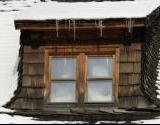Main Menu
Six tips for saving on winter electricity
Winter approaches as does the dread linked with increased home heating bills. Winter heating bills can be controlled but people fail to take steps to increase efficiency and safety. “Most people don’t really have a clue,” says Kirk Lindstrom, vice president of operations for Building Energy Experts, an energy management firm near Chicago. Try some of these tips to prepare for a chilly winter and the bills that go with.
Insulation is the winter coat your house wears.
Insulation reduces heat transfer in winter and summer, provides ventilation to control moisture and ultimately makes your home more livable. Be sure to seal all ductwork – this accounts for 10-30% of heating and cooling costs. “Many houses leak like sieves,” explained Lindstrom>
Adjust your thermostat while you’re at work
You can save 10% off your winter heating bill if you turn your thermostat down ten degrees when you leave for work. If you bring it down while you’re sleeping, you could save a combined 20%. “That’s a no-brainer,” said Lindstrom.
Dial back the hot water heater
Water heaters can take up 14-25% of our monthly energy bill. Most are factory set to 140 degrees. But no one uses water that hot out of the faucet. Considering dialing down to 120 degrees and save up to 3-5% on your water heating cost for every degree you setback. A tank insulator sleeve really helps too.
Windows
“Just look at them: They’re big holes in your walls!” exclaims Lindstrom. Double pane thermal windows arrest the heat transfer by inserting dead-air space. Switching out single-pane, glazed, weighted windows, can save 30% right off the top. A return on investment can be achieved in two years. Clear plastic sheeting over the interior of unused windows can help as well.
Check out the chimney
Another hole in the house. Is your flu closed? Is it sealing properly? A sealed glass door over the opening can bring 1-2% savings.
Portable space heaters not worth it
“If it looks like (an exposed toaster) in your house and you can touch the heating element, you’ve got problems,” said Lindstrom.
Other things you can do
Reverse your ceiling fans and push the heated air back down. Close heating vents in unused rooms and close the door. Insulate outlets and light switches. Replace the most used light bulbs with CFL bulbs.
Source: Jay MacDonald, BankRate
This information is solely for informational and educational purposes only. The publication of this information does not constitute the practice of medicine, family planning, child psychology, marriage counseling and this information does not replace the advice of your physician or other health care or mental health care provider. Neither the owners or employees of NaturalFamilyOnline.com or the author(s) of site content take responsibility for any possible consequences from any treatment, procedure, exercise, dietary modification, application of medication or any other action involving the care of yourself or any family members which results from reading this site. It is always best to speak with your primary health care provider before engaging in any form of self treatment. Additional information contained in our Legal Statement


